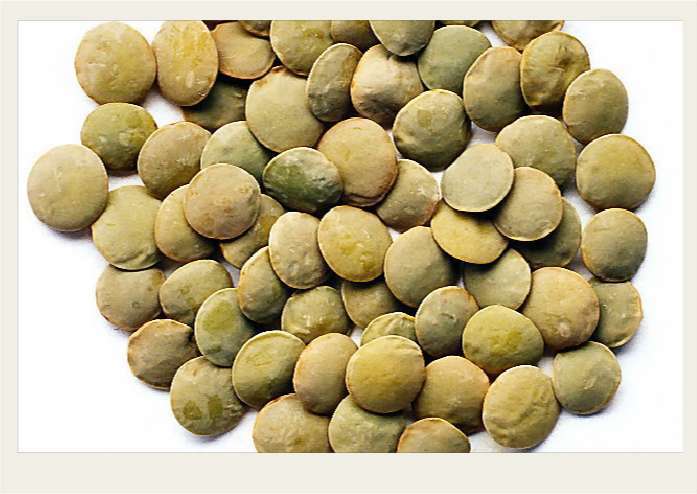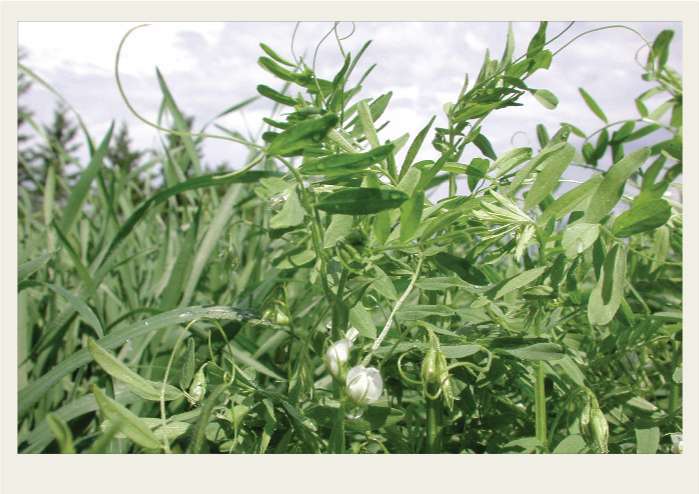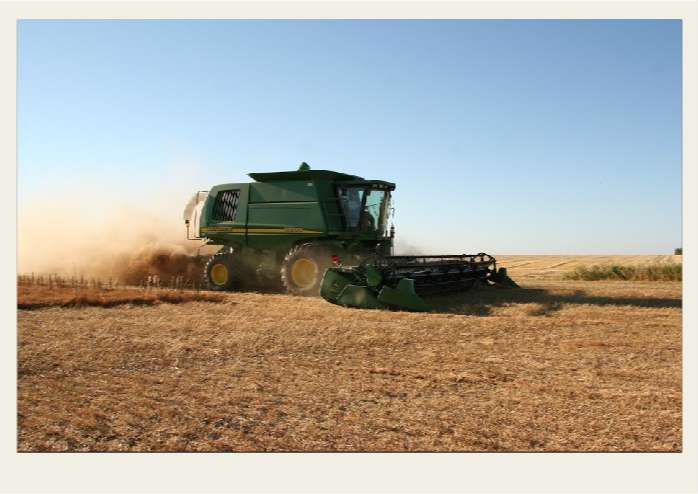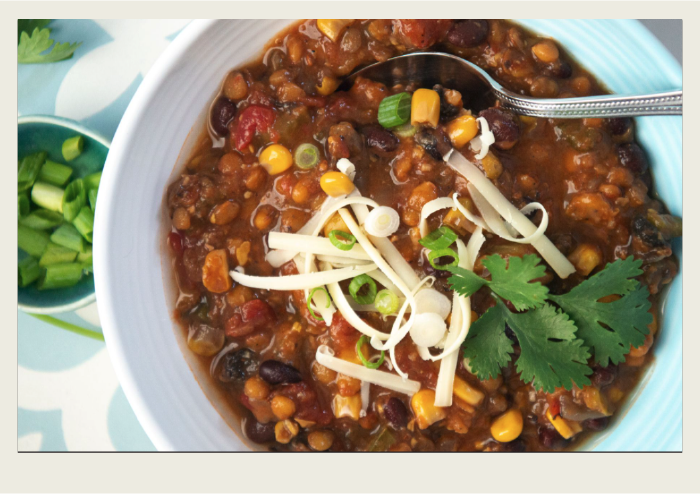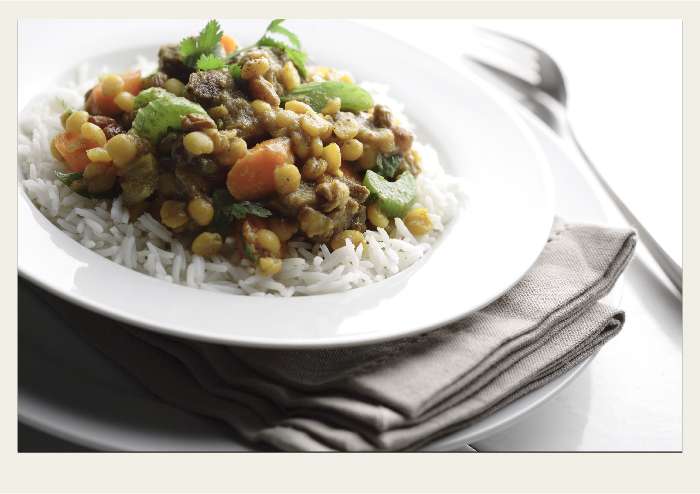Lentils
Lentils Overview
Lentils are grouped with beans and peas as part of the legume family. Lentils are a pulse crop, which is a legume plant that has dry, edible seeds in pods. Pulses come in a variety of shapes, sizes, and colours.
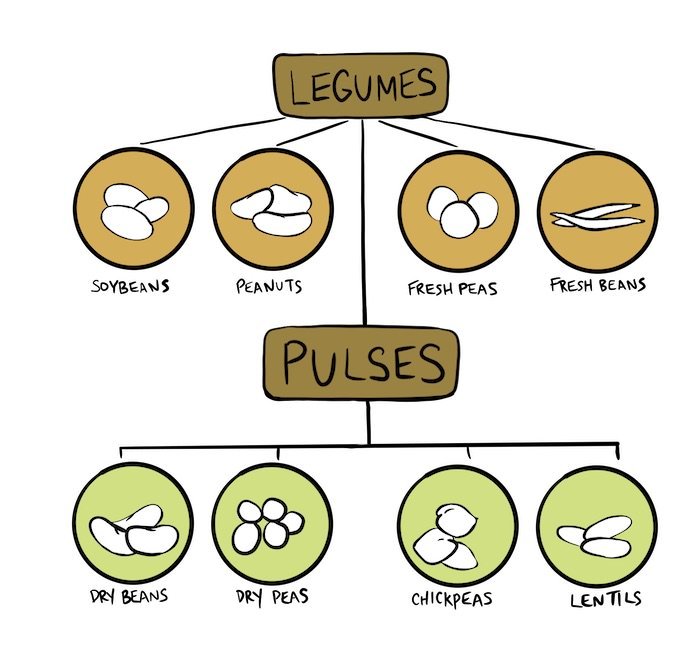
Pulses are legume plants that have dry, edible seeds that are grown in pods.

Lentils, chickpeas, peas, and beans are all pulse crops grown in Canada.
Lentils are lens-shaped seeds that grow in pods, usually with two seeds in each pod. Lentils started to be grown in Western Canada in 1970. The large green lentil variety, called Laird, created by the Crop Development Centre in Saskatoon, was the most important factor that made the lentil industry successful in Canada.
Lentils are lens-shaped seeds that grow in pods.
The large green lentil variety, called Laird, was created at the Crop Development Centre in Saskatoon.
Large lentil producing countries include India, Canada, Turkey, Syria, Australia, Nepal, and the United States. Canada exports more lentils than any other country. India consumes and grows the most lentils.
There are several different varieties of lentils grown in Saskatchewan. Red and green lentils are the most common. Some other varieties that are less common are French green, dark specked, Spanish brown, and black.

There are a variety of lentils that are grown in Saskatchewan.
Industry Overview
Approximately 95% of Canada’s lentils are produced in Saskatchewan! Lentil farmers in Saskatchewan seeded 1.6 million hectares (3.73 million acres) in 2020, which produced about 2.61 million tonnes (2.88 million tons)!
Once harvested, lentils can be transported by semi-trucks to elevators to be stored, cleaned, and shipped. Lentils can also be sent to processing facilities where they are prepared to be used in food for humans. Lentils are usually left whole, but they can be dried and then packaged. These products are then transported to grocery stores where they can be purchased and cooked.

In 2020, Saskatchewan produced about 2.61 million tonnes of lentils!
Canada exports lentils on ships. The top countries importing lentils include India, United Arab Emirates, Bangladesh, Turkey, and Pakistan. Lentils are taken from elevators on trains and put onto ships to transport to these international countries that buy Canadian grain. Saskatchewan exported approximately $2.2 B in lentils, which makes lentils the province’s 5th largest export.

Canada trades with countries around the world to import and export a variety of products including crops such as wheat, canola, lentils, peas, and barley!
History of Lentils
Lentils were first grown in Western and Southern Asia. There is evidence that Egyptians, Romans, and Hebrews ate lentils. Depending on the location, lentils were sometimes considered food for the poor and other cultures considered it a food for the upper class. People in Egypt fed it to royalty and in Greece it was fed to the poor. Now, lentils are popular for everyone in society due to their ability to cook quickly, taste good, and provide many nutrients.

Royalty in Egypt ate lentils in their meals.
Growing Lentils
Lentils grow best in brown and dark brown soil zones, but can grow in black soil zones if it is not too wet.
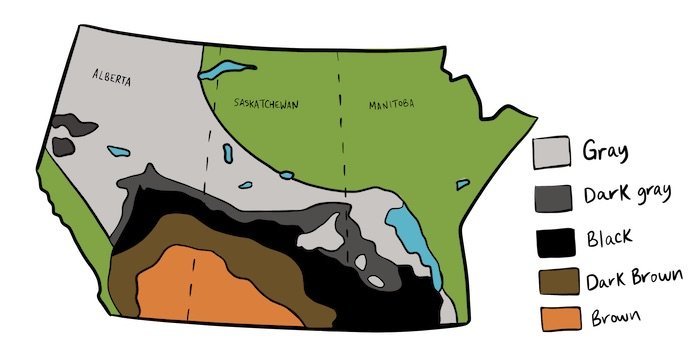
This graph shows the major soil zones across the Prairies.
Lentils have a fibrous root system. They prefer drier growing conditions and flat land. Growing lentils is good for soil that has lost a lot of its nutrients because lentils are able to take nitrogen from the air and convert it to plant food. Since lentils can do this, farmers do not need to add nitrogen fertilizer.
Growing lentils is good for soil that has lost a lot of its nutrients.
Lentil plants will continue to grow until the plant goes through some type of stress. The stress can be high temperature, not enough nutrients, or not enough water. Throughout the summer, the crop can be sprayed because of weeds, insects, or diseases.
Lentil plants will continue to grow until the plant goes through some type of stress.
The plant is ready for harvest when the bottom pods turn yellow or brown, then they can be swathed or sprayed to dry the crop out. The crop can be swathed into rows and then combined to pick up the rows, or sprayed and straight-cut combined (where the swathing and combining are done at the same time).
This farmer sprayed his lentils when they are ready to harvest to dry them out. Now, he is using a straight-cut combine to harvest.
Lentils Nutrition
Lentils have many health benefits and are slowly becoming a bigger part of the North American diet. Lentils are low in fat, but high in fibre and protein. They are a good mix of proteins and carbohydrates, which is ideal for athletes.
Lentils are a healthy choice for our bodies.
Lentils Products
Lentils are used in a variety of delicious dishes.

